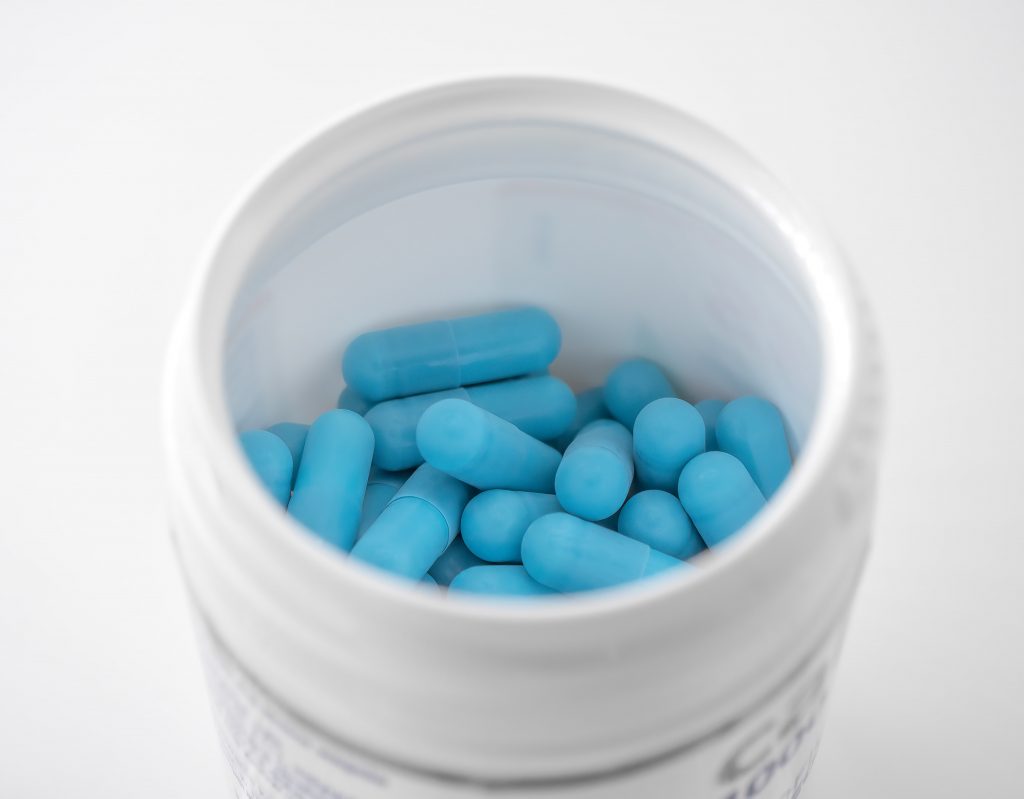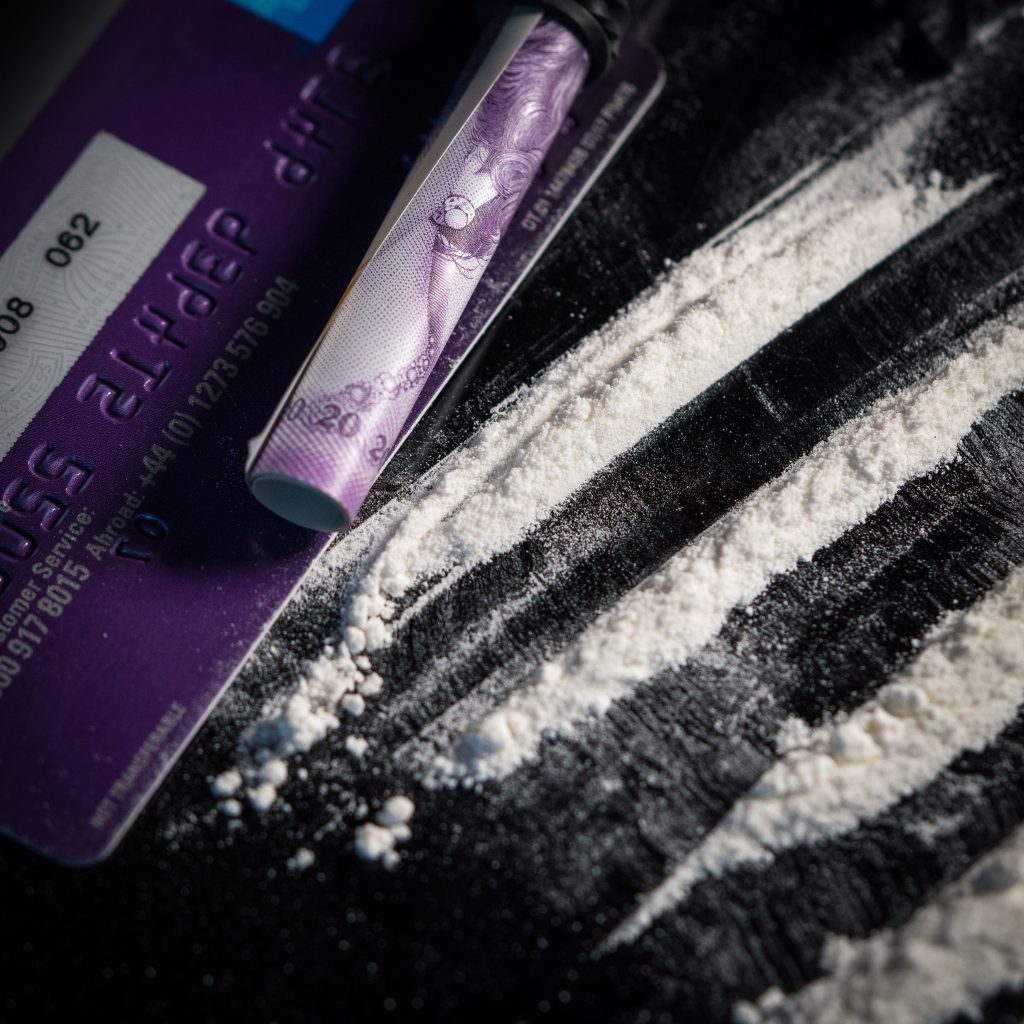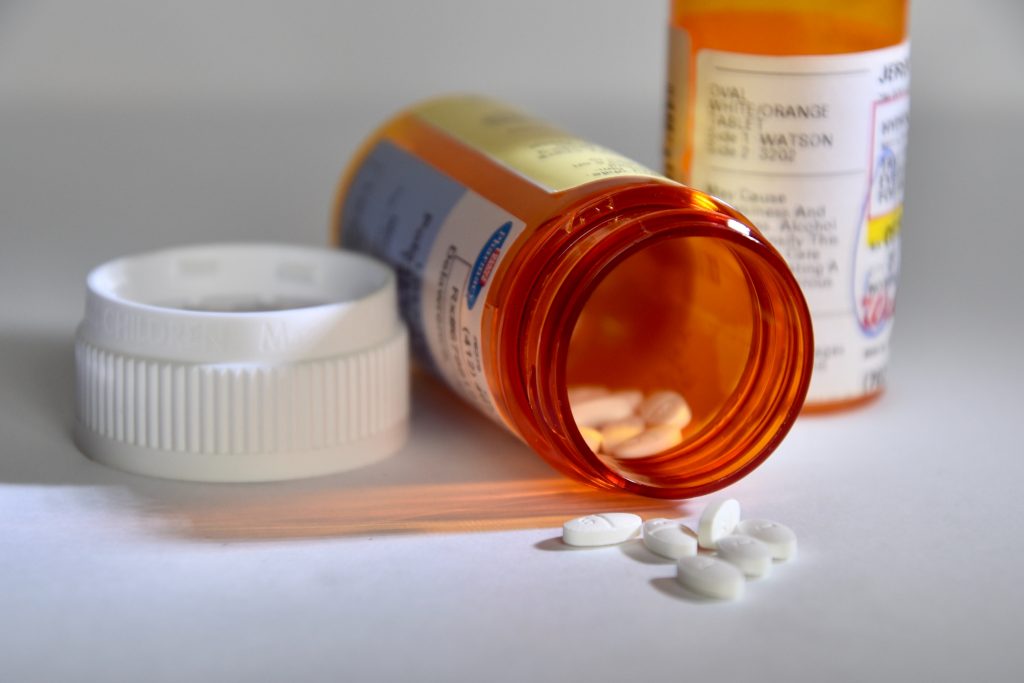5.3 Narcotics Continued
Psychological Dependence
Use can create psychological dependence. Long after the physical need for the drug has passed, the addict may continue to think and talk about using drugs and feel overwhelmed coping with daily activities. Relapse is common if there are no changes to the physical environment or the behavioural motivators that prompted the abuse in the first place.
Physical Dependence and Withdrawal
Physical dependence is a consequence of chronic opioid use, and withdrawal takes place when drug use is discontinued. The intensity and character of the physical symptoms experienced during withdrawal are directly related to the particular drug used, the total daily dose, the interval between doses, the duration of use, and the health and personality of the user. These symptoms usually appear shortly before the time of the next scheduled dose.
Early withdrawal symptoms often include watery eyes, runny nose, yawning, and sweating. As the withdrawal worsens, symptoms can include: Restlessness, irritability, loss of appetite, nausea, tremors, drug craving, severe depression, vomiting, increased heart rate, and blood pressure, and chills alternating with flushing and excessive sweating.
However, without intervention, the withdrawal usually runs its course, and most physical symptoms disappear within days or weeks, depending on the particular drug.
What are their Overdose Effects?

Overdoses of narcotics are not uncommon and can be fatal. Physical signs of narcotics/opioid overdose include:
- constricted (pinpoint) pupils
- cold clammy skin, confusion
- convulsions
- extreme drowsiness
- slowed breathing
Which Drugs Cause Similar Effects?
With the exception of pain relief and cough suppression, most central nervous system depressants (like barbiturates, benzodiazepines, and alcohol) have similar effects, including slowed breathing, tolerance, and dependence. What is their legal status in the Canada? Narcotics/opioids are controlled substances under The Narcotics Safety and Awareness Act, 2010 (1) and its requirements apply to a list of prescription medications called monitored drugs. Monitored drugs are defined as follows:
- Any controlled substance under the federal Controlled Drugs and Substances Act. Examples of these include narcotic analgesics (e.g., codeine, morphine, oxycodone, etc.), and controlled drugs such as methylphenidate and barbiturates, as well as benzodiazepines and targeted substances. Complete list of the Controlled Drugs and Substances Act (Canada)(2).
- Other opioid medications not listed in the Controlled Drugs and Substances Act such as tramadol containing products.
Fentanyl
Heroin
Hydromorphone
Methadone
Morphine
Opium
Oxycodone
What is Fentanyl?
Fentanyl is a potent synthetic opioid drug approved by the Food and Drug Administration for use as an analgesic (pain relief) and anesthetic. It is approximately 100 times more potent than morphine and 50 times more potent than heroin as an analgesic.
What is its Origin?
Fentanyl was first developed in 1959 and introduced in the 1960s as an intravenous anesthetic. It is legally manufactured and distributed in the United States and Canada. Licit fentanyl pharmaceutical products are diverted via theft, fraudulent prescriptions, and illicit distribution by patients, physicians, and pharmacists.
Most street fentanyl in Canada is produced illegally as a powder. Street fentanyl may be swallowed, smoked, snorted or injected. Fentanyl is released from prescription patches by smoking or chewing. Fentanyl is sold as a powder or a pill, or is cut into (mixed with) drugs such as heroin(3) or cocaine(4). This type of fentanyl is usually sold as another substance, so people swallow, snort or inject it without realizing. Many overdoses have occurred because people did not know that what they were taking was contaminated with fentanyl. If you or someone you know uses opioids, it is a good idea to have a free naloxone kit(5). Naloxone(6) is a medication that can temporarily reverse the effects of an opioid overdose and allow time for medical help to arrive.
What are Common Street Names?
Common street names include:
Apache, China Girl, China Town, Dance Fever, Friend, Good-fellas, Great Bear, He-Man, Jackpot, King Ivory, Murder 8, and Tango & Cash.
What does it Look Like?

Fentanyl pharmaceutical products are currently available in the following dosage forms: tablets, injections and skin patches. Fentanyl is a very potent opioid pain reliever. A few grains can be enough to kill you. Fentanyl is usually used in a hospital setting. A doctor can also prescribe it to help control severe pain.
How is it Abused?
Fentanyl can be injected, snorted/sniffed, smoked, taken orally by pill or tablet, and spiked onto blotter paper. Fentanyl patches are abused by removing its gel contents and then injecting or ingesting these contents. Patches have also been frozen, cut into pieces, and placed under the tongue or in the cheek cavity. Illicitly produced fentanyl is sold alone or in combination with heroin and other substances and has been identified in counterfeit pills, mimicking pharmaceutical drugs such as oxycodone. .
What is the Effect on the Body?
Fentanyl, similar to other commonly used opioid analgesics(e.g., morphine), produces effects such as relaxation, euphoria, pain relief, sedation, confusion, drowsiness, dizziness, nausea, vomiting, urinary retention, pupillary constriction, and respiratory depression.
What are the Overdose Effects?
Overdose may result in stupor, changes in pupillary size, cold and clammy skin, cyanosis, coma, and respiratory failure leading to death. The presence of the triad of symptoms such as coma, pinpoint pupils, and respiratory depression are strongly suggestive of opioid poisoning. Fentanyl is dangerous for many reasons:
- It is often impossible to tell if a powder or pill contains fentanyl. You can’t see it, smell it or taste it. Even your dealer might not know what they are selling or how strong it is.
- Because fentanyl is so strong, the difference between a dose that will get you high and a dose that can kill you is very small.
- You can overdose even if you use someone’s prescription patch and know the dose. Everyone handles fentanyl differently. One person’s dose can kill another person.
- If you are using other drugs at the same time—for example, other opioids, alcohol or sedatives such as Xanax, Valium or Ativan—the risk of overdose is even higher.
Which Drugs Cause Similar Effects?
Drugs that cause similar effects include other opioids such as morphine, hydrocodone, oxycodone, hydromorphone, methadone, and heroin.
What is the Legal Status in Canada?
Fentanyl and its equivalents (analogues) are controlled under Schedule I of the Controlled Drugs and Substances Act(2) Activities such as sale, possession and production are illegal, unless authorized for medical, scientific or industrial purposes.
For more information on Fentanyl:
What is Heroin?
Heroin is a highly addictive drug and it is a rapidly acting opioid.
What is its Origin?
Heroin is processed from morphine, a naturally occurring substance extracted from the seed pod of certain varieties of poppy plants grown in Mexico, South America, Southwest Asia (Afghanistan and Pakistan), and Southeast Asia (Thailand, Laos, and Myanmar (Burma). ,
Heroin comes in several forms, primarily white powder from Mexico and South America; and “black tar” and brown powder from Mexico.
What are Common Street Names?
Common Street Names for Heroin Include: Big H, H, Junk, Black Tar, Chiva, Hell Dust, Horse, Negra, Smack, Skag, China white and Thunder.
What Does it Look Like?

Heroin is typically sold as a white or brownish powder, or as the black sticky substance known on the streets as “black tar heroin.” Although purer heroin is becoming more common, most street heroin is “cut” with other drugs or with substances such as sugar, starch, powdered milk, or quinine.
How is it Abused?
Heroin can be injected, smoked, or sniffed/snorted. High purity heroin is usually snorted or smoked.
What is its Effect on the Mind?
Because it enters the brain so rapidly, heroin is particularly addictive, both psychologically and physically. Heroin users report feeling a surge of euphoria or “rush,” followed by a twilight state of sleep and wakefulness. One of the most significant effects of heroin use is addiction. With regular heroin use, tolerance to the drug develops. Once this happens, the person must use more heroin to achieve the same intensity. As higher doses of the drug are used over time, physical dependence and addiction to the drug develop.
What is its effect on the body?
One of the most significant effects of heroin use is addiction. With regular heroin use, tolerance to the drug develops. Once this happens, the person must use more heroin to achieve the same intensity. As higher doses of the drug are used over time, physical dependence and addiction to the drug develop. Effects of heroin use include drowsiness, respiratory depression, constricted pupils, nausea, a warm flushing of the skin, dry mouth, and heavy extremities.
What are its Overdose Effects?
Because heroin users do not know the actual strength of the drug or its true contents, they are at a high risk of overdose or death. The effects of a heroin overdose are slow and shallow breathing, blue lips and fingernails, clammy skin, convulsions, coma, and possible death.
Which Drugs Cause similar Effects?
Other opioids such as OxyContin®, Vicodin®, codeine, morphine, methadone, and fentanyl can cause similar effects as heroin.
What is its legal status in Canada?
Heroin is controlled under Schedule I of the Controlled Drugs and Substances Act (2). Activities such as sale, possession and production are illegal, unless authorized for medical, scientific or industrial purposes.
For more information on Heroin:
Hydromorphone

What is Hydromorphone?
Hydromorphone belongs to a class of drugs called “opioids,” which includes morphine. It has an analgesic potency of two to eight times greater than that of morphine and has a rapid onset of action.
What is its Origin?
Hydromorphone is legally manufactured and distributed in the United States. However, users can obtain hydromorphone from forged prescriptions, “doctor-shopping,” theft from pharmacies, and from friends and acquaintances.
What are the Street Names?
Common street names include: D, Dillies, Dust, Footballs, Juice, and Smack.
What Does it Look Like?
Hydromorphone comes in tablets, capsules, oral solutions, and injectable formulations.
How is it Abused?
Users may abuse hydromorphone tablets by ingesting them. Injectable solutions, as well as tablets that have been crushed and dissolved in a solution, may be injected as a substitute for heroin.
What is its Effect on the Mind?
When used as a drug of abuse, and not under a doctor’s supervision, hydromorphone is taken to produce feelings of euphoria, relaxation, sedation, and reduced anxiety. It may also cause mental clouding, changes in mood, nervousness, and restlessness. It works centrally (in the brain) to reduce pain and suppress a cough. Hydromorphone use is associated with both physiological and psychological dependence.
What is its Effect on the Body?
Hydromorphone may cause constipation, pupillary constriction, urinary retention, nausea, vomiting, respiratory depression, dizziness, impaired coordination, loss of appetite, rash, slow or rapid heartbeat, and changes in blood pressure.
What are its Overdose Effects?
Acute overdose of hydromorphone can produce: Severe respiratory depression, drowsiness progressing to stupor or coma, lack of skeletal muscle tone, cold and clammy skin, constricted pupils, and reduction in blood pressure and heart rate. Severe overdose may result in death due to respiratory depression.
Which Drugs cause Similar Effects?
Drugs that have similar effects include: Heroin, morphine, hydrocodone, fentanyl, and oxycodone.
What is its Legal status in Canada?
Hydromorphone products are controlled in schedule II of the federal Controlled Drugs & Substances Act(2).
For more information on:
Methadone
What is Methadone?

Methadone is a synthetic (man-made) narcotic. Methadone is an opioid medication used to treat severe pain and opioid addiction(8). When used to treat severe pain, methadone is available as a tablet or oral solution. When used to treat opioid addiction, methadone usually comes in the form of a fruit-flavoured drink. The powder is dissolved and taken orally once a day.
What is its Origin?
German scientists synthesized methadone during World War II because of a shortage of morphine. Methadone was introduced into the United States in 1947 as an analgesic (Dolophinel).
What are Common Street Names?
Common street names include:
Amidone, Chocolate Chip Cookies, Fizzies, Maria, Pastora, Salvia, Street Methadone, and Wafer.
What Does it Look Like?
Methadone is available as a tablet, oral solution, or injectable liquid. Tablets are available in 5 mg and 10 mg formulations. As of January 1, 2008, manufacturers of methadone hydro- chloride tablets 40 mg (dispersible) have voluntarily agreed to restrict distribution of this formulation to only those facilities authorized for detoxification and maintenance treatment of opioid addiction, and hospitals. Manufacturers will instruct their wholesale distributors to discontinue supplying this formulation to any facility not meeting the above criteria.
How is it Abused?
Methadone can be swallowed or injected.
What is its Effect on the Mind?
Abuse of methadone can lead to psychological dependence.
What is its Effect on the Body?
When an individual uses methadone, he/she may experience physical symptoms like sweating, itchy skin, or sleepiness. Individuals who abuse methadone risk becoming tolerant of and physically dependent on the drug. When use is stopped, individuals may experience withdrawal symptoms including: Anxiety, muscle tremors, nausea, diarrhea, vomiting, and abdominal cramps.
What are its Overdose Effects?
The effects of a methadone overdose are slow and shallow breathing, blue fingernails and lips, stomach spasms, clammy skin, convulsions, weak pulse, coma, and possible death.
Which Drugs cause Similar Effects?
Although chemically unlike morphine or heroin, methadone produces many of the same effects.
What is its Legal Status in Canada?
It is a controlled substance that is regulated under the Controlled Drugs and Substances Act (CDSA)(2), and the Narcotic Control Regulations (NCR)(9). In the past, practitioners were required to obtain an exemption from Health Canada before they could prescribe, sell, provide or administer methadone. While it may legally be used under a doctor’s supervision, its non-medical use is illegal.
For more information on methadone:
Morphine
What is Morphine?

Morphine is a non-synthetic narcotic with a high potential for abuse and is derived from opium. It is used for the treatment of pain.
What is its Origin?
In Canada Morphine is one of many different chemicals present in raw opium. Heroin is morphine that has been even further refined via chemical reaction (it is simply morphine with an acetyl molecule attached). Heroin is roughly two to three times as potent as morphine.
What are Common Street Names?
Common street names include Dreamer, Emsel, First Line, God’s Drug, Hows, M.S., Mister Blue, Morf, Morpho, and Unkie.
What Does it Look Like?
Morphine is marketed under generic and brand name products, including: MS-Contin, Oramorph SR, MSIR, Roxanol, Kadian, and RMS.
How is it Abused?
Traditionally, morphine was almost exclusively used by injection, but the variety of pharmaceutical forms that it is marketed as today support its use by oral and other routes of administration.
Forms Include:
Oral solutions, immediate-and extended-release tablets and capsules, and injectable preparations. Those dependent on morphine prefer injection because the drug enters the bloodstream more quickly.
What is its Effect on the Mind?
Morphine’s effects include euphoria and relief of pain. Chronic use of morphine results in tolerance and physical and psychological dependence.
What is its Effect on the Body?
Morphine use results in relief from physical pain, a decrease in hunger, and inhibition of the cough reflex.
What are its Overdose Effects?
Overdose effects include cold and clammy skin, lowered blood pressure, sleepiness, slowed breathing, slow pulse rate, coma, and possible death.
Which Drugs Cause Similar Effects?
Drugs causing similar effects as morphine include opium, codeine, heroin, methadone, hydrocodone, fentanyl, and oxycodone.
What is its Legal status in Canada?
Morphine is a class A, schedule 2 drug. It is illegal to possess without a prescription, or to supply or produce without a licence.
For more information about Morphine:
What is Opium?

Opium is a highly addictive non-synthetic narcotic that is extracted from the poppy plant, Papaver somniferum. The opium poppy is the key source for many narcotics, including morphine, codeine, and heroin.
What is its Origin?
The poppy plant, Papaver somniferum, is the source of opium. It was grown in the Mediterranean region as early as 5000 B.C. and has since been cultivated in a number of countries throughout the world. The milky fluid that seeps from its incisions in the unripe seedpod of this poppy has been scraped by hand and air-dried to produce what is known as opium.
A more modern method of harvesting for pharmaceutical use is by the industrial poppy straw process of extracting alkaloids from the mature dried plant (concentrate of a poppy straw). Currently, there is no commercial cultivation of opium poppy taking place in Canada. Opioid-based pharmaceuticals sold in Canada are either imported as finished dosage forms or manufactured domestically from active pharmaceutical ingredients imported into Canada.
What are Common Street Names?
Common street names include Ah-pen-yen, Aunti, Aunti Emma, Big O, Black Pill, Chandoo, Chandu, Chinese Molasses, Chinese Tobacco, Dopium, Dover’s Powder, Dream Gun, Dream Stick, Dreams, Easing Powder, Fi-do-nie, Gee, God’s Medicine, Gondola, Goric, Great Tobacco, Guma, Hop/hops, Joy Plant, Midnight Oil, Mira, O, O.P., Ope, Pen Yan, Pin Gon, Pox, Skee, Toxy, Toys, When-shee, Ze, and Zero.
What Does it Look Like?
Opium can be a liquid, solid, or powder, but most poppy straw concentrate is available commercially as a fine brownish powder.
How is it Abused?
Opium can be smoked, intravenously injected, or taken in pill form. Opium is also abused in combination with other drugs. For example, “Black” is a combination of marijuana, opium, and methamphetamine, and “Buddha” is potent marijuana spiked with opium.
What is its Effect on the Mind?
The intensity of opium’s euphoric effects on the brain depends on the dose and route of administration. It works quickly when smoked because the opiate chemicals pass into the lungs, where they are quickly absorbed and then sent to the brain. An opium “high” is very similar to a heroin “high”; users experience a euphoric rush, followed by relaxation and the relief of physical pain.
What is its Effect on the Body?
Opium inhibits muscle movement in the bowels leading to constipation. It also can dry out the mouth and mucous membranes in the nose. Opium use leads to physical and psychological dependence and can lead to overdose.
What are its Overdose Effects?
Overdose effects include slow breathing, seizures, dizziness, weakness, loss of consciousness, coma, and possible death.
Drugs that Cause Similar Effects Include:
Morphine, codeine, heroin, methadone, hydroquinone, fentanyl, and oxycodone.
What is its Legal Status in Canada?
Opium poppy and its derivatives are regulated under Schedule I of the Controlled Drugs and Substances Act(2). Only licensed dealers under the Narcotic Control Regulations are allowed to import or export opium, with a valid permit.
For more information:
Oxycodone
What is Oxycodone?
Oxycodone is a semi-synthetic narcotic analgesic and historically has been a popular drug of abuse among the narcotic abusing population.
What is its Origin?
Oxycodone is synthesized from thebaine, a constituent of the poppy plants.
What are Common Street Names?
Common street names include: Hillbilly Heroin, Kicker, OC, Ox, Roxy, Perc, and Oxy.
What Does it Look Like?
Oxycodone is marketed alone as OxyContin in 10, 20, 40 and 80 mg extended-release tablets and other immediate-release capsules like 5 mg OxyIR. It is also marketed in combination products with aspirin such as Percodan or acetaminophen such as Roxicet or Percocet. (Note: when acetaminophen is added to a drug, it often gets the suffix “cet.”)
How is it Abused?
Oxycodone is abused orally or intravenously. The tablets are crushed and sniffed or dissolved in water and injected. Others heat a tablet that has been placed on a piece of foil then inhale the vapors.
What is its Effect on the Mind?
Euphoria and feelings of relaxation are the most common effects of oxycodone on the brain, which explains its high potential for abuse.
What is its Effect on the Body?
Physiological effects of oxycodone include pain relief, sedation, respiratory depression, constipation, papillary constriction, and cough suppression. Extended or chronic use of oxycodone containing acetaminophen may cause severe liver damage.
What are its Overdose Effects?
Overdose effects include: Extreme drowsiness, muscle weakness, confusion, cold and clammy skin, pinpoint pupils, shallow breathing, slow heart rate, fainting, coma, and possible death.
Which Drugs cause Similar Effects?
Drugs that cause similar effects to Oxycodone include opium, codeine, heroin, methadone, hydrocodone, fentanyl, and morphine.
What is its Legal Status in Canada?
Oxycodone is used for its analgesic properties to treat moderate to severe pain and should be taken as prescribed by a doctor. It is illegal for anyone to possess oxycodone in Canada without a valid prescription.
For more information:
Additional Information to Explore
if you are interested to learn more on your own, Top Documentary Films has many films on drugs, especially opioids.
ATTRIBUTION
Drugs, Health & Behavior by Jacqueline Schwab and Denise Salters is licensed under a Creative Commons Attribution-NonCommercial-ShareAlike 4.0 International License, except where otherwise noted with minor revisions for clarity, ease of use and Canadian Content
References
- Government of Ontario, Ministry of Health and Long-Term Care. (n.d.-b). Ontario Narcotics Strategy – Public Information – MOHLTC. https://www.health.gov.on.ca/en/public/programs/drugs/ons/ons_legislation.aspx
- Legislative Services Branch. (2023e, January 14). Consolidated federal laws of Canada, Controlled Drugs and Substances Act. https://laws-lois.justice.gc.ca/eng/acts/C-38.8/
- 20143 Heroin. (n.d.). CAMH. https://www.camh.ca/en/health-info/mental-illness-and-addiction-index/heroin
- Cocaine Crack. (n.d.). CAMH. https://www.camh.ca/en/health-info/mental-illness-and-addiction-index/cocaine
- Where to get a free naloxone kit. (n.d.). ontario.ca. https://www.ontario.ca/page/where-get-free-naloxone-kit
- Naloxone. (n.d.). CAMH. https://www.camh.ca/en/health-info/mental-illness-and-addiction-index/naloxone
- Health Canada. (2021a, November 23). About the Good Samaritan Drug Overdose Act. Canada.ca. https://www.canada.ca/en/health-canada/services/opioids/about-good-samaritan-drug-overdose-act.html
- 20118 Opioid Addiction. (n.d.). CAMH. https://www.camh.ca/en/health-info/mental-illness-and-addiction-index/opioid-addiction
- Legislative Services Branch. (2022a, March 31). Consolidated federal laws of canada, Narcotic Control Regulations. https://laws-lois.justice.gc.ca/eng/Regulations/C.R.C.,_c._1041/index.html

